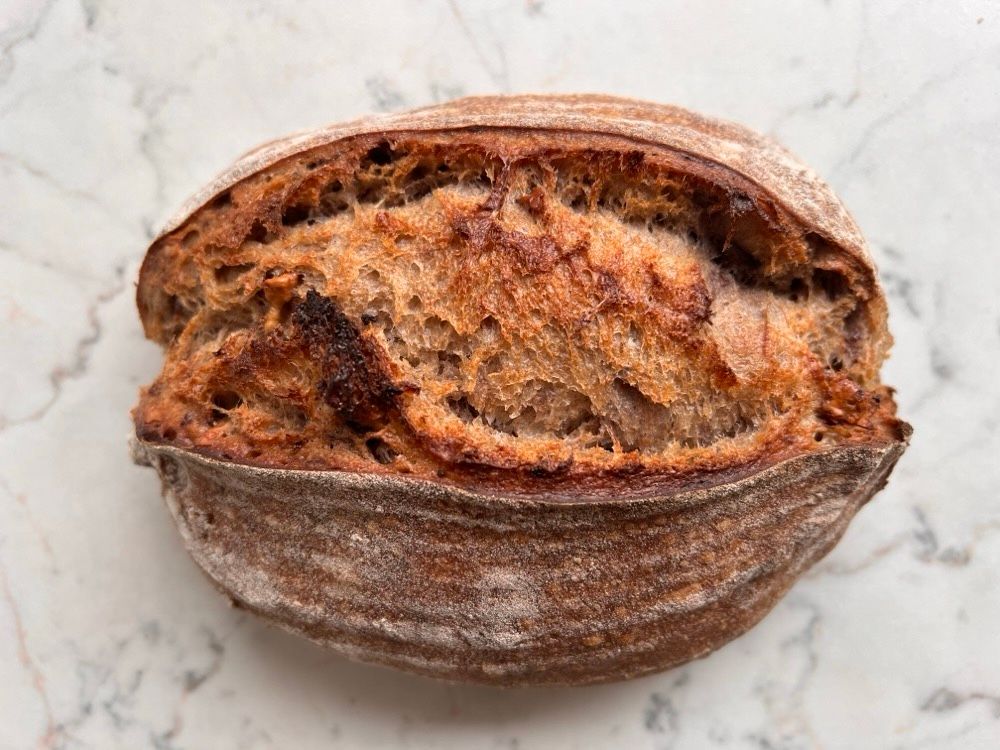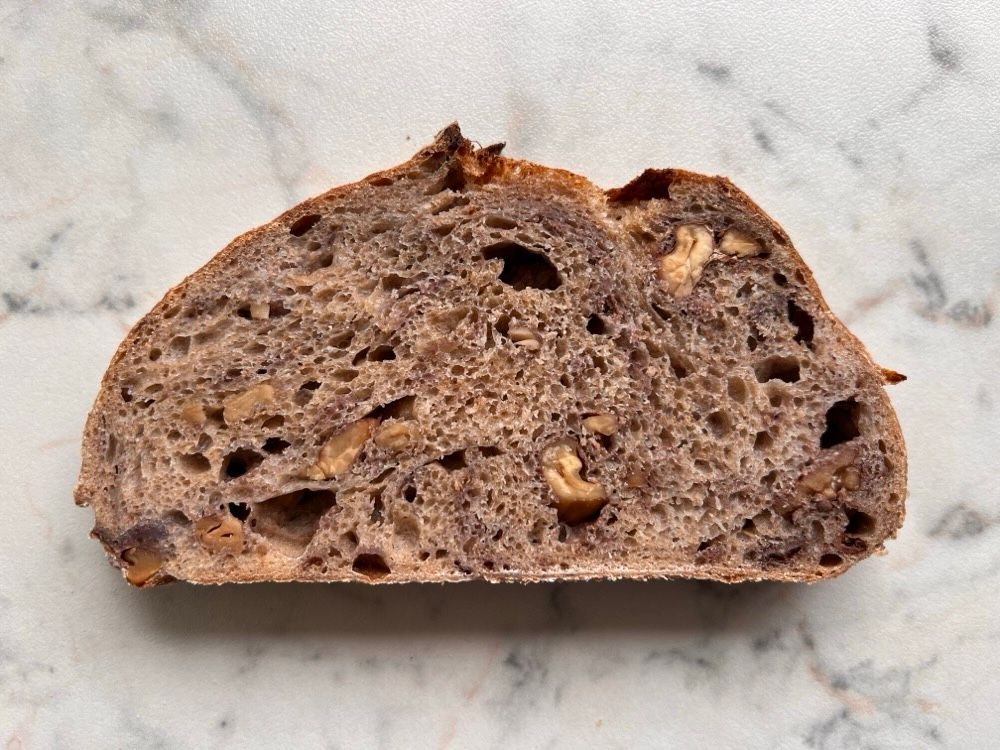Baking bread with rye flour is amazing, but it’s also a bit tricky because rye has very little gluten in it. You can certainly bake 100% rye loaves (ask the Germans or the Scandinavians) but they need to be baked in a tin else they end up like flat, dense frisbees.
In the Merton simple loaf, I add 5% rye flour and this is simply for that lovely nutty tang that it gives to the loaf.
When baking free standing loaves with flours that are low or no gluten 20% is about the upper limit else the loaves will get a little dense and a little flat.
Over the weekend I tried a walnut and rye loaf made from 30% strong white flour, 40% high extraction four, 20% rye and 10% wholemeal. I added toasted walnuts weighed at 25% of the total dry flour weight (this is what is called a baker’s percentage), and the loaves were hydrated at 80% — all that wholemeal and rye flour really soaks up the water.
Once the dough had fermented I was worried that it was a little stiff (ie under-hydrated). But fear not …
 walnut and rye loaf
walnut and rye loaf  walnut and rye crumb
walnut and rye crumb
The oven spring is great, and the texture and taste of the bread is divine — moist and tangy and with crunch from the walnuts. I think I could increase the hydration a bit (up to 83% next time), or perhaps add a bit more rye flour as a scald. I wonder how much that would reduce the oven spring?
Regardless, I’m definitely going to make this bread for COGS.